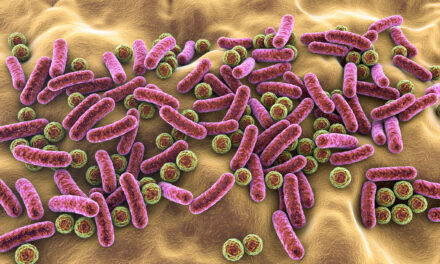New Innovations in Green Chemistry that may impact Cosmetic Formulations
Image used for illustrative purposes only
In the fourth and final part of the series on Green Chemistry, Dr Suman Majumder introduces an innovation that is finding great favour among formulators. He also briefs about the future of Green Chemistry.
Having read about the principles of green chemistry and its impact on formulations, a formulator eagerly looks towards incorporating innovative ingredient. Here we talk about lactic acid, an ingredient we use widely.
Lactic acid from sustainable sources*
Lactic acid and its derivatives have been widely used in food, pharmaceutical, cosmetic, and industrial applications. It has also been receiving great attention as a feedstock for the manufacture of polylactic acid (PLA), a biodegradable polymer used as environmentally friendly biodegradable plastic. Lactic acid is produced commercially either by chemical synthesis or by microbial fermentation. Approximately 90% of the total lactic acid produced worldwide is made by bacterial fermentation and the rest is produced synthetically by the hydrolysis of lactonitrile. The chemical synthesis of lactic acid always results in a racemic mixture of lactic acid, which is a major disadvantage. Fermentative production of lactic acid offers the advantages in both utilization of renewable carbohydrates and production of optically pure L- or D-lactic acid, depending on the strain selected.
Innovation summary: Production of L(+)lactic acid from sugarcane bagasse cellulose, one of the abundant biomass materials available in India, was studied. The bagasse was chemically treated to obtain a purified bagasse cellulose sample, which is much more amenable to cellulase enzyme attack than bagasse itself. This sample, at high concentration (10%), was hydrolysed by cellulase enzyme preparations (10 FPU g21 cellulose) derived from mutants generated in the laboratory. This research obtained maximum hydrolysis (72%), yielding glucose and cellobiose as the main end products. Lactic acid was produced from this bagasse cellulose sample by simultaneous saccharification and fermentation (SSF) in a media containing a cellulase enzyme preparation derived from Penicilliumjanthinellum mutant EU1 and cellobiose utilizing Lactobacillus delbrueckii mutant Uc-3. A maximum lactic acid concentration of 67 g l21 was produced from a concentration of 80 g l21 of bagasse cellulose, the highest productivity and yield being 0.93 g l21 h21 and 0.83 g g21, respectively. The mutant Uc-3 was found to utilize high concentrations of cellobiose (50 g l21) and convert it into lactic acid in a homo-fermentative way.
Considering that bagasse is a waste material available in abundance, the researchers propose to valorise this biomass to produce cellulose and then sugars, which can be fermented to products such as ethanol and lactic acid.
*Adsul M.G. et al; Green Chem., 2007, 9, 58–62.
Image for illustration purpose only.
FUTURE OF GREEN CHEMISTRY
With the emergence of the new field of synthetic biology, any active molecule or the nature-based polymers that can be used in cosmetic formulation can be synthesized in a biomimetic benign way in bio culture and this will open up newer avenues for the cosmetic industry to use synthetic biology as an effective “Green Chemistry” tool.
In personal care products, essential oils, natural dyes, soaps, cream and butters, cosmetics, etc. can all be synthesized using Synthetic Biology.
References:
- Anastas, P. T. et al; Green Chem., 2018, 20, 1929–1961.
- Anastas, P. T.; Warner, J. C. Green Chemistry: Theory and Practice; Oxford University Press: New York, 1998.
- Hjeresen, D. L.; Schutt, D. L.; Boese, J. M. J. Chem. Educ.2000, 77, 1543.
- Adsul M.G. et al; Green Chem., 2007, 9, 58–62.
- Sahota A.; Sustainability: How the Cosmetics Industry is Greening up.
- Synthetic Biology Revolutionizing Cosmetic Formulations: https://www.cosmeticsdesign.com/Article/2015/04/02/Synthetic-biology-revolutionizing-cosmetics-formulation
- Synthetic Biology Is Disrupting Personal Care, Making It More Sustainable — And More Personal: https://www.forbes.com/sites/johncumbers/2019/09/10/synthetic-biology-is-disrupting-personal-care-making-it-more-sustainable-and-personal/#20c2450547c5

Author : Suman Majumder . PhD, FRSC
suman.majumder1970@gmail .com
Dr Suman Majumder is a senior research and management professional with 20 years of postdoctoral experience in Organic Synthesis and Product Development for various industry sectors including Pharmaceutical, FMCG (Food, Personal Care, Laundry, Hygiene), Packaging and Agro-chemical. He was associated with Industrial R&D with companies like TCG Lifesciences, Dow Chemicals, Sigma-Aldrich, Unilever, Loreal, Avery Dennison and is presently the Head – R&D at Bajaj Consumer Care.













Subscribe To Our Newsletter
Join our mailing list to receive the latest news and updates from The Cosmetics industry
You have Successfully Subscribed!